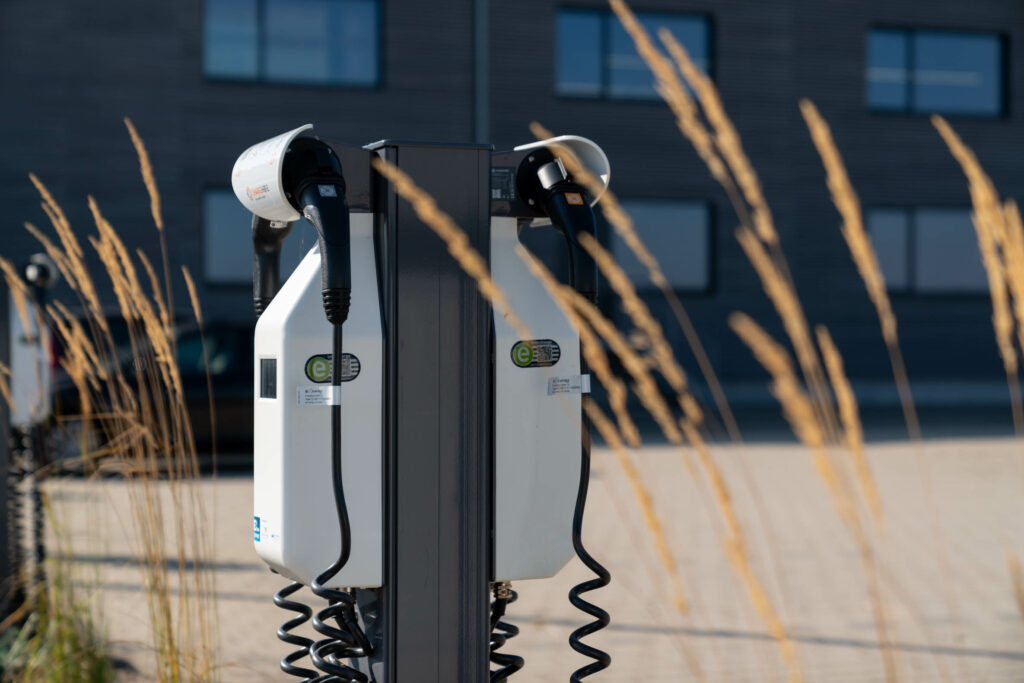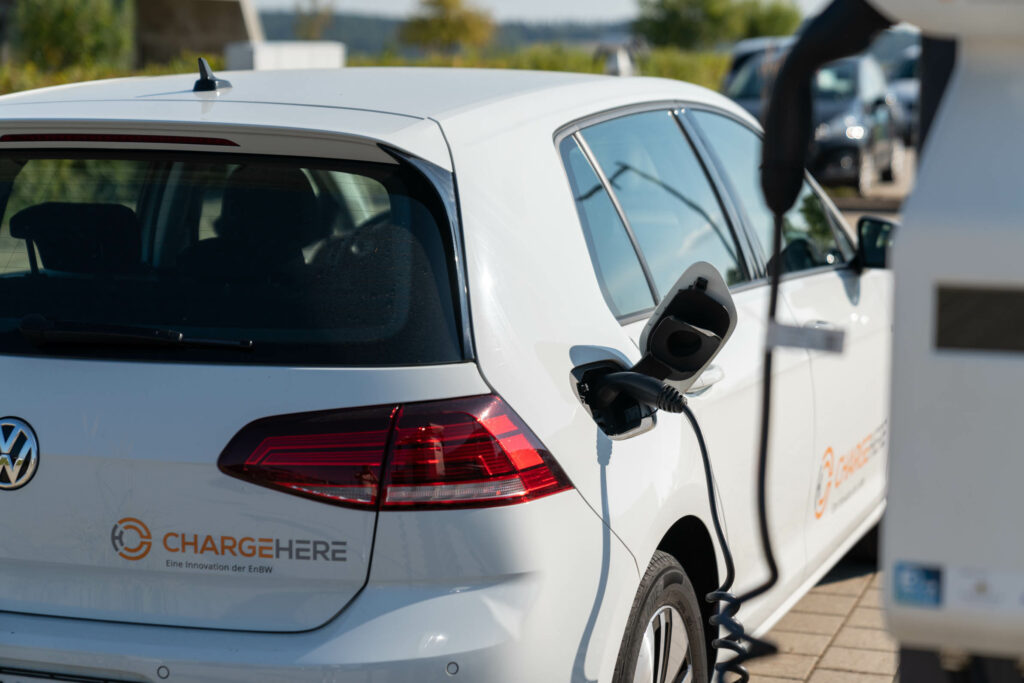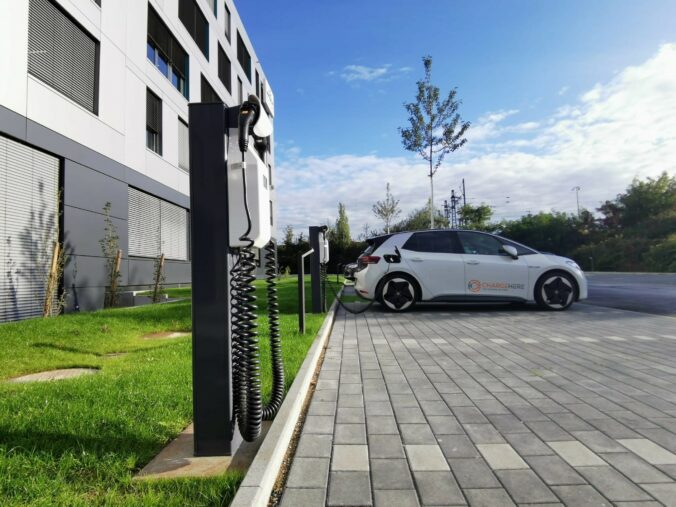Die Welt befindet sich im Wandel und so auch die Mobilitätswelt. Aufgrund der schon heute spürbaren Auswirkungen des Klimawandels, wird zunehmend auf nachhaltige und umweltfreundliche Lösungen gesetzt. So spielt auch die Elektromobilität eine immer größere Rolle, um den Verkehrssektor nachhaltiger zu gestalten. Unternehmen stehen vor der Herausforderung, innovative Wege zu finden und gleichzeitig ihre betrieblichen Abläufe zu optimieren. Und hier erweist sich der Aufbau von Ladeinfrastruktur als besonders lukrativ. Die EnBW-Tochter ChargeHere hat sich seit einigen Jahren auf zuverlässige und zukunftsfähige Ladelösungen für große Parkflächen spezialisiert. Das Unternehmen verfolgt hierbei eine klare Mission: Die Verbindung von Energie und Mobilität als essenziellen Treiber für die klimaneutrale Zukunft zu nutzen. In diesem Blogbeitrag erkunden wir die Gründe, wie Unternehmen von der Investition in Ladeinfrastruktur am Firmenstandort profitieren.

Nachhaltig Wirtschaften
Ein wichtiger Grund Ladeinfrastruktur im Unternehmen zu implementieren, liegt in der Förderung nachhaltiger Mobilitätslösungen. Um die Klimaziele zu erreichen, hat sowohl die Europäische Union als auch Deutschland mehrere Förderungen für Investitionen im Bereich der Elektromobilität ausgesprochen, von denen Unternehmen profitieren können. Elektrofahrzeuge sind zudem umweltfreundlicher als herkömmliche Verbrenner, da sie im Betrieb keine Schadstoffe wie CO2 oder Stickoxide produzieren. So kann auch die eigene Umweltbilanz von Unternehmen verbessert werden. CO2-Einsparungen, Realisierung von Nachhaltigkeitszielen sowie die Einnahme einer Vorreiterrolle in der Branche wirken sich positiv auf die Außenwahrnehmung aus. Durch das Angebot einer firmeneigenen Ladeinfrastruktur pflegen Unternehmen ihr umweltbewusstes und zukunftsorientiertes Image sowie ihr Engagement für Nachhaltigkeit und Umweltschutz.
Attraktiver Arbeitgeber und zufriedene Mitarbeitende
Immer mehr Menschen entscheiden sich für den Kauf eines Elektrofahrzeugs. Das Angebot von Ladestationen am Arbeitsplatz kann demnach für E-Autobesitzer ein entscheidendes Kriterium bei der Arbeitgeberwahl sein. Die Möglichkeit, nicht nur den Dienstwagen, sondern auch das eigene Privatfahrzeug am Arbeitsplatz laden zu können, bietet aktuell einen wesentlichen Vorteil. Das problemlose Laden während der Arbeitszeit ermöglicht ein sorgloses und reibungsloses Ladeerlebnis und erspart den Mitarbeitenden Umwege fürs Laden auf dem Heimweg. Das spart nicht nur Zeit, sondern stärkt auch die Motivation und Zufriedenheit der Mitarbeiter, da sie sich in Ihrem Unternehmen gut aufgehoben fühlen. So kann die Einführung von Ladelösungen am Firmenstandort ein entscheidender Faktor sein, um qualifizierte Fachkräfte anzuziehen und zu binden, da der Arbeitgeber die benötigte Infrastruktur für seine Mitarbeitenden zur Verfügung stellt.
Kostenersparnis ist ein klarer Vorteil
Ladeinfrastruktur am Firmenparkplatz ist nicht nur ökologisch wertvoll, sondern bringt auch ökonomische Vorteile mit sich. Langfristig betrachtet, kann die Investition in Ladeinfrastruktur zu erheblichen Kostenersparnissen führen, denn E-Fahrzeuge haben niedrigere Betriebskosten im Vergleich zu Fahrzeugen mit Verbrennungsmotoren. Für größere Investitionen lohnt sich am Ende immer die Betrachtung der Total Costs of Ownership, denn mit einer internen Ladeinfrastruktur können Energie-, Wartungs- und Reparaturkosten für die Fahrzeugflotte gesenkt werden. Außerdem bieten einige Regionen steuerliche Anreize und Förderangebote für Unternehmen, die in Elektromobilität investieren. Je nach Bundesland und Förderprogramm können Unternehmen bis zu 50% der Kosten für den Kauf und die Installation von Ladestationen erstattet bekommen.
Zukunft von heute ist Zukunft von Morgen
Die Elektromobilität ist auf dem Vormarsch und auch in Zukunft werden immer mehr Unternehmen und Privatpersonen auf alternative Kraftstoffe umsteigen. Technische Innovationen und Fortschritte im Bereich der Elektromobilität und Ladeinfrastruktur entwickeln sich rasant. Durch die Bereitstellung von Ladeinfrastruktur positionieren sich Unternehmen also als Vorreiter und sind bestens gerüstet für die stetig wachsende Mobilitätslandschaft. Wer heute also in die Zukunft investiert, investiert in die Zukunft von Morgen.

Mit den Ladelösungen von EnBW-Tochter ChargeHere erhalten Unternehmen das Full-Service-Paket: vom Aufbau zur Inbetriebnahme, über die Betriebsführung bis hin zur Abrechnung – das Unternehmen bietet individuelle Ladelösungen und garantiert ein zuverlässiges Ladeerlebnis zu jeder Zeit. Durch die ausgerufene Ladegarantie im Sommer 2023 wird die höchste Zufriedenheit bei Nutzenden der Ladeinfrastruktur zugesichert und Zuverlässigkeit beim Laden als Top-Thema für ein positives Ladeerlebnis priorisiert.
Der Ladelösungs-Anbieter setzt zudem auf das Laden mit Strom, der aus erneuerbaren Energien gewonnen wird. Das eigens entwickelte Produkt ChargeSolar des Unternehmens passt Ladevorgänge dynamisch an die PV-Erzeugung am Standort an, um so die CO2-Bilanz im Betrieb zu minimieren.
Dieser Artikel wurde verfasst von ChargeHere


